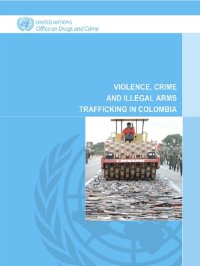By David Lochhead, Tidiani Diakité, Roberto Sollazzo, Saikou Sow, Raoul Sumo Tayo, Leonard Tettey
The use of improvised explosive devices (IEDs) in West Africa expanded dramatically between 2014 and 2022. As of 2022, Burkina Faso, Cameroon, Mali, Niger, and Nigeria were heavily affected by these weapons, while Benin, Côte d’Ivoire, and Togo suffered from their use as an emerging threat. IED-building networks have established material and training links across conflict theatres in West and Central Africa, including the Lake Chad Basin, where armed groups have used IEDs extensively. IED designs have remained constant and inexpensive throughout the West Africa region, making them attractive for use in attacks against domestic and international security forces, UN peacekeepers, and civilians. The Small Arms Survey collected data on more than 2,200 IED-related incidents between March 2013 and September 2022, including the type, date, and location of these events. Information on perpetrators, their targets, and more than 6,600 casualties from deaths and injuries was also collected (Small Arms Survey, 2022). The data was collected through research undertaken in Burkina Faso, Cameroon, Côte d’Ivoire, Ghana, Guinea, Mali, and Niger, as well as desk research and remote interviews concerning Benin, Chad, and Nigeria. Where relevant from a comparative perspective, discussion of other regions that have countries with IED incidents or components occurs throughout the Report, such as those in North Africa, Central Africa, East Africa, and the Middle East. Most IED incidents analysed during this study involved IEDs containing explosive components or precursors specifically manufactured for the commercial extractive and construction sectors. Chemical products such as ammonium nitrate (AN), manufactured and supplied for bulk mining explosive emulsions, have entered IED-building networks, and are sourced principally from Ghana and Nigeria. Commercial explosives in bulk, including their precursors and accessories such as electric initiators and detonating cords, are diverted from the legal to illicit markets. This diversion primarily fulfils demand from the largely unregulated artisanal gold mining sector across West and Central Africa. A small subset of this diverted material also provisions IED construction. Captured, stolen, and recovered explosive ordnance—including legacy anti-vehicle mines trafficked from Chad, Libya, and possibly Sudan—also constitutes a source of IED components. Coordinated action among affected, source, and transit states is required to prevent armed groups and criminals from accessing commercial explosive materials and other IED components. Such action can involve: national stocktaking exercises; the development of national and regional counter-IED (C-IED) strategies; monitoring, information-sharing, and coordination mechanisms; regulatory modernization and harmonization; engagement with artisanal mining associations, the mining and explosives industry, states, and regional trade blocs in pursuit of regulatory reform; and efforts to establish minimum standards for bulk and individual traceability of commercial explosives. Reducing the recovery of explosive ordnance requires renewed programmatic investment in clearing minefields and explosive remnants of war across the Sahe
Geneva, SWIT: Small Arms Survey, Graduate Institute of International and Development Studies , 2023. 124p.
















